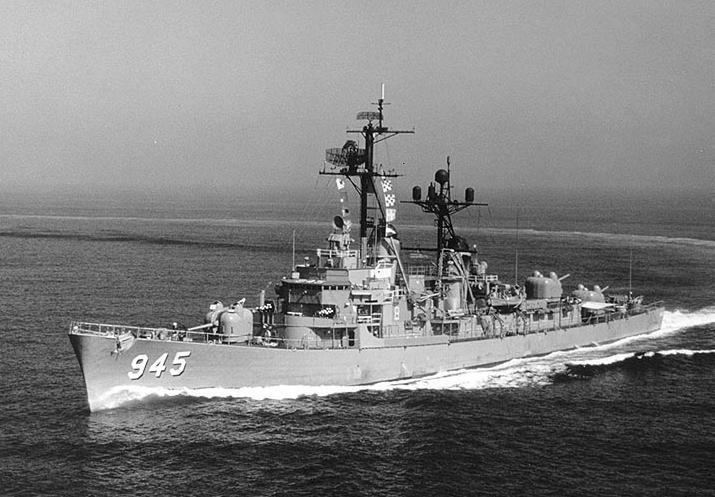Preceded by Mitscher class Built 1953–1959 | Succeeded by Farragut class | |
 | ||
Builders Bath Iron WorksBethlehem Steel QuincyIngalls ShipbuildingPuget Sound Bridge and Dredging Company | ||
The 18 Forrest Sherman-class destroyers were the first US post-war destroyers (DD-927 to DD-930 were completed as destroyer leaders). Commissioned beginning in 1955, these ships served until the late 1980s. Their weaponry underwent considerable modification during their years of service. Four were converted to guided missile destroyers. This class also served as the basis for the Charles F. Adams-class guided missile destroyer.
Contents
Two ships of the class have become museum ships, nine have been sunk in training exercises, and the others have been scrapped or are scheduled to be scrapped.
Construction
Nine ships were constructed by Bath Iron Works of Bath, Maine, five were built by Bethlehem Steel at the Fore River Shipyard in Quincy, Massachusetts, two were built by Ingalls Shipbuilding at Pascagoula, Mississippi and two were built by Puget Sound Bridge and Dredging Company in Seattle, Washington. These destroyers were assigned hull numbers 931 to 951, but the series skipped over the numbers used to designate the war prizes DD-934 (the Japanese ex-Hanazuki), DD-935 (the German T35), and DD-939 (the German Z39).
Description
At the time they entered service, these ships were the largest US destroyers ever built, 418 feet (127 m) long, with a standard displacement of 2,800 tonnes (2,800 long tons). They were originally armed with three 5-inch (127 mm)/54 caliber guns mounted in single turrets (one forward and two aft), 4 3-inch (76 mm)/50 caliber AA guns in twin mounts, as well as hedgehogs and torpedoes for ASW. However, over the years, weaponry was considerably modified. The hedgehogs and 3-inch (76 mm) guns were removed from all ships during the 1960s and 1970s. In addition the fixed torpedo tubes were replaced by two triple 12.75 inches (324 mm) Mark 32 torpedo tube mounts. Eight of the class were modernized to improve their ASW capabilities, becoming the Barry class. These ships were fitted with an eight cell ASROC launcher in place of the No. 2 5-inch (127 mm) gun, and with a variable-depth sonar system.
Four of the destroyers—John Paul Jones, Parsons, Decatur, and Somers—were converted to guided missile destroyers.
As a test platform, the Hull carried the Navy's prototype 8"/55 caliber Mark 71 gun light-weight gun from 1975–1978 when the program was canceled, and the 5-inch mount was restored. Hull remains the only modern destroyer-type to carry an 8-inch (203 mm) gun.
Hull and later ships were equipped with B&W Bailey Meter Company's new automatic boiler combustion control system, and a modified hurricane bow/anchor configuration. These ships are listed as Hull-class destroyers in some references.
Disposition
Of the 18 completed, nine were disposed of in fleet training exercises, five were sold by Defense Reutilization and Marketing Service (DRMS) for scrapping, two are museums and two (Forrest Sherman, Barry) are awaiting scrapping.
